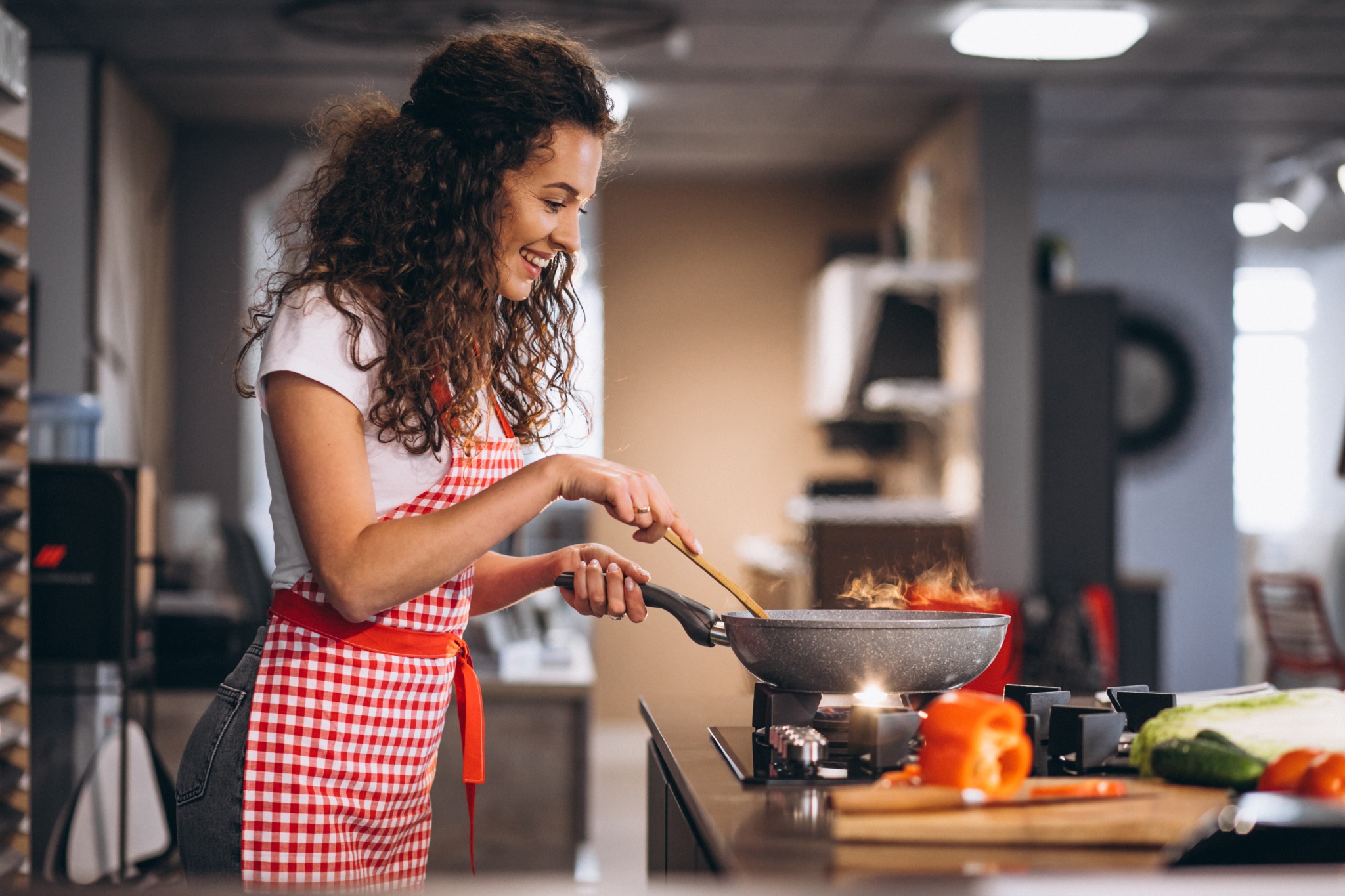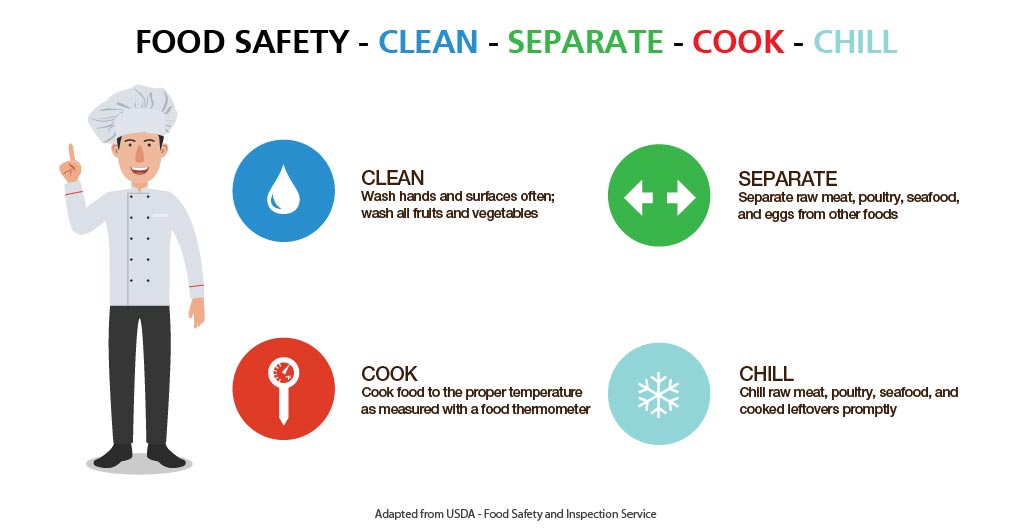A cook-chill kitchen design is a system that has been gaining popularity in the food industry due to its efficiency and cost-saving benefits. It involves preparing and cooking food in advance, then rapidly chilling it and storing it for later use. This method is especially useful for restaurants and other food establishments that experience high demand and need to produce large quantities of food quickly. If you're considering implementing a cook-chill system in your kitchen, this comprehensive guide will provide you with all the information you need to get started.1. Cook-Chill Kitchen Design: A Comprehensive Guide
One of the main benefits of a cook-chill kitchen design is the ability to prepare food in advance and store it for later use. This saves time and allows for a more streamlined process, as food can be prepped and cooked during off-peak hours and then quickly reheated when needed. Additionally, a cook-chill system can help reduce food waste, as food can be stored for longer periods of time without spoiling. This can result in cost savings for the kitchen and also helps to promote sustainability.2. The Benefits of Implementing a Cook-Chill System in Your Kitchen
When designing a cook-chill kitchen, efficiency should be a top priority. This can be achieved through careful planning and organization of the kitchen layout. It's important to consider the flow of food from preparation to cooking to chilling and storage. Equipment placement is also crucial in a cook-chill kitchen. Placing refrigeration and cooling equipment near the cooking area can help streamline the process and reduce the time it takes to chill food.3. How to Design a Cook-Chill Kitchen for Maximum Efficiency
To ensure the success of your cook-chill kitchen, there are a few tips and tricks to keep in mind. First, make sure to invest in high-quality equipment that is specifically designed for a cook-chill system. This will ensure that food is properly chilled and stored at the correct temperature. It's also important to properly train staff on the cook-chill process and to have a clear system in place for labeling and tracking food items. This will help prevent any mix-ups or confusion and ensure that food is used within its designated shelf life.4. Cook-Chill Kitchen Design: Tips and Tricks for Success
Technology plays a significant role in modern cook-chill kitchen design. There are now advanced systems and equipment available that make the process even more efficient and reliable. For example, there are automated blast chillers and rethermalizers that can quickly chill and reheat food at precise temperatures, eliminating the risk of human error. There are also software programs that can help with inventory management and tracking of food items, making it easier to maintain food safety and quality standards.5. The Role of Technology in Cook-Chill Kitchen Design
Before implementing a cook-chill system in your kitchen, there are a few factors to consider. These include the type of food you're preparing, the volume of food needed, and the space available in your kitchen. Certain foods, such as soups and stews, are more suitable for a cook-chill process, while others, like fried foods, may not hold up well. It's also important to ensure that your kitchen has enough refrigeration and storage space to accommodate the cook-chill process.6. Cook-Chill Kitchen Design: Factors to Consider Before Implementation
Food safety and quality should always be a top priority in any kitchen. With a cook-chill system, there are specific guidelines and protocols that need to be followed to ensure food is stored and reheated safely. Proper cooling and reheating temperatures, as well as labeling and tracking of food items, are crucial in maintaining food safety and quality. It's also important to regularly clean and maintain equipment to prevent any contamination or foodborne illnesses.7. The Impact of Cook-Chill Kitchen Design on Food Safety and Quality
There are numerous success stories and case studies of restaurants and food establishments that have implemented a cook-chill system and seen significant improvements in their efficiency and cost savings. For example, a large hospital in the UK saw a 20% reduction in food waste and a 15% increase in efficiency after implementing a cook-chill system. This resulted in cost savings and improved food quality for patients and staff.8. Cook-Chill Kitchen Design: Case Studies and Success Stories
One of the main reasons for implementing a cook-chill kitchen design is to save costs. To optimize your system for maximum cost savings, it's important to regularly review and analyze your processes and make adjustments as needed. This can include finding ways to reduce energy usage, minimizing food waste, and streamlining the process to increase efficiency. Regular maintenance and upgrades to equipment can also help save costs in the long run.9. How to Optimize Your Cook-Chill Kitchen Design for Cost Savings
While a cook-chill system can bring many benefits to a kitchen, there are also some common mistakes that should be avoided. These include not properly training staff on the process, not investing in high-quality equipment, and not following proper food safety guidelines. It's important to address any issues or mistakes early on to prevent any negative impact on food quality and safety. Regular training and monitoring can help prevent these mistakes and ensure the success of your cook-chill kitchen design.10. Cook-Chill Kitchen Design: Common Mistakes to Avoid
The Benefits of Using Cook Chill Kitchen Design for Your Home

What is Cook Chill Kitchen Design?
 Cook chill kitchen design is a new trend in house design that focuses on creating a functional and efficient kitchen space. It involves the use of specialized equipment and techniques that allow for food to be prepared in advance and then chilled, making it convenient for busy households.
Cook chill kitchen design is a new trend in house design that focuses on creating a functional and efficient kitchen space. It involves the use of specialized equipment and techniques that allow for food to be prepared in advance and then chilled, making it convenient for busy households.
Efficiency and Convenience
 One of the main benefits of cook chill kitchen design is its efficiency and convenience. With this design, you can prepare meals in advance and store them in the refrigerator or freezer, allowing for quick and easy reheating when needed. This is especially useful for busy families who may not have the time to cook every day.
Another advantage
of this design is the reduction of food waste. With cook chill, you can portion out meals and only reheat what you need, reducing the likelihood of leftovers being thrown away. This not only saves food but also saves money in the long run.
One of the main benefits of cook chill kitchen design is its efficiency and convenience. With this design, you can prepare meals in advance and store them in the refrigerator or freezer, allowing for quick and easy reheating when needed. This is especially useful for busy families who may not have the time to cook every day.
Another advantage
of this design is the reduction of food waste. With cook chill, you can portion out meals and only reheat what you need, reducing the likelihood of leftovers being thrown away. This not only saves food but also saves money in the long run.
Healthier Eating
 Cook chill kitchen design
also promotes healthier eating habits. By preparing meals in advance, you have more control over the ingredients and portion sizes. This can help with portion control and reduce the temptation of ordering takeout or eating unhealthy convenience foods.
Cook chill kitchen design
also promotes healthier eating habits. By preparing meals in advance, you have more control over the ingredients and portion sizes. This can help with portion control and reduce the temptation of ordering takeout or eating unhealthy convenience foods.
Space-Saving Design
 For smaller homes or apartments, cook chill kitchen design is a great space-saving solution. The specialized equipment used in this design, such as blast chillers and vacuum sealers, are designed to be compact and can easily fit into smaller kitchen spaces. This allows for a more efficient use of space and a clutter-free kitchen.
For smaller homes or apartments, cook chill kitchen design is a great space-saving solution. The specialized equipment used in this design, such as blast chillers and vacuum sealers, are designed to be compact and can easily fit into smaller kitchen spaces. This allows for a more efficient use of space and a clutter-free kitchen.
Cost-Effective
 Lastly, cook chill kitchen design can also be cost-effective. By preparing meals in advance, you can buy ingredients in bulk and save money on groceries. It also eliminates the need for expensive takeout meals or dining out, which can add up quickly.
In conclusion,
cook chill kitchen design
is a practical and efficient way to create a functional kitchen space in your home. It offers numerous benefits such as convenience, healthier eating, space-saving, and cost-effectiveness. Consider incorporating this design into your home for a more organized and stress-free cooking experience.
Lastly, cook chill kitchen design can also be cost-effective. By preparing meals in advance, you can buy ingredients in bulk and save money on groceries. It also eliminates the need for expensive takeout meals or dining out, which can add up quickly.
In conclusion,
cook chill kitchen design
is a practical and efficient way to create a functional kitchen space in your home. It offers numerous benefits such as convenience, healthier eating, space-saving, and cost-effectiveness. Consider incorporating this design into your home for a more organized and stress-free cooking experience.















.jpg/7a26f474-8eaa-6aac-c006-bc5c3883a280?t=1647418916892)
































































